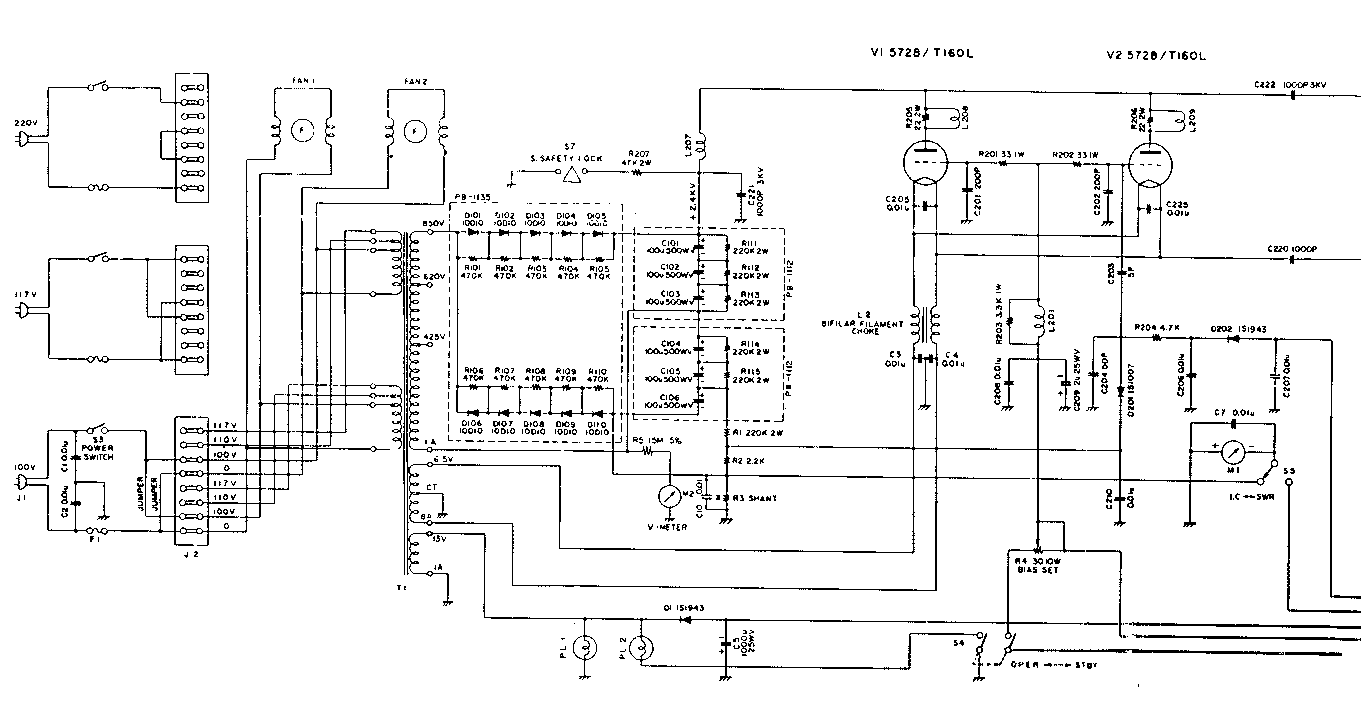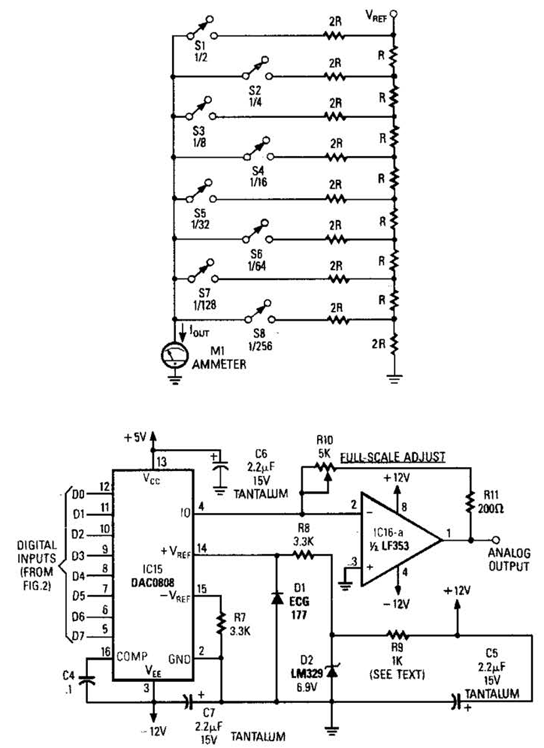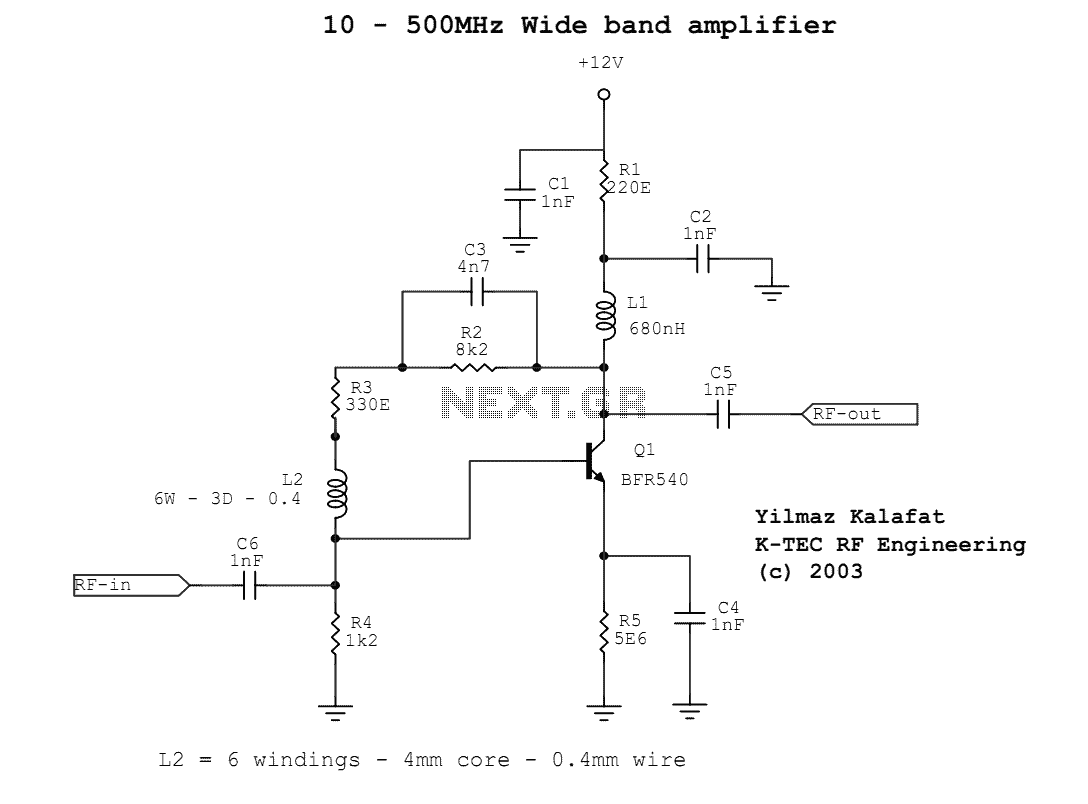
500w hf linear amplifier circuit diagram wiring

This is a low-cost 150-watt amplifier circuit with a diagram and schematic design utilizing two Darlington power transistors, TIP142 and TIP147.
The 150-watt amplifier circuit is designed to provide high power output while maintaining cost efficiency, making it suitable for various audio applications. The core components of this circuit are the Darlington power transistors, TIP142 and TIP147, which are known for their high current gain and ability to handle significant power levels.
The schematic typically includes input and output stages, biasing networks, and feedback loops to ensure stability and linear amplification. The input stage may consist of a differential amplifier configuration to improve signal integrity and reduce noise. The use of Darlington pairs enhances the current-driving capability, allowing the amplifier to deliver substantial output power to speakers or other loads.
Power supply considerations are crucial for the amplifier's performance. A suitable power supply must be selected to provide adequate voltage and current levels to the transistors. Capacitors may be included in the design to filter power supply noise and ensure stable operation.
Thermal management is also a key aspect of the circuit design. Heatsinks should be employed with the power transistors to dissipate heat effectively, preventing thermal runaway and ensuring reliability during extended operation. Additional protection circuits, such as fuses or thermal cutoff switches, may be integrated to safeguard the amplifier from overload conditions.
Overall, this 150-watt amplifier circuit represents an effective solution for those seeking a powerful yet economical audio amplification system. The use of TIP142 and TIP147 transistors highlights its capability to deliver high performance in various applications.This is a low cost 150 watt amplifier circuit with diagram and schematic design using two darlington power transistors tip 142 and tip 147. this amplifier circuit can This is a low cost 150 Watt amplifier circuit with diagram and schematic design using two Darlington power transistors TIP142 and TIP 147.
This amplifier circuit can. 🔗 External reference
The 150-watt amplifier circuit is designed to provide high power output while maintaining cost efficiency, making it suitable for various audio applications. The core components of this circuit are the Darlington power transistors, TIP142 and TIP147, which are known for their high current gain and ability to handle significant power levels.
The schematic typically includes input and output stages, biasing networks, and feedback loops to ensure stability and linear amplification. The input stage may consist of a differential amplifier configuration to improve signal integrity and reduce noise. The use of Darlington pairs enhances the current-driving capability, allowing the amplifier to deliver substantial output power to speakers or other loads.
Power supply considerations are crucial for the amplifier's performance. A suitable power supply must be selected to provide adequate voltage and current levels to the transistors. Capacitors may be included in the design to filter power supply noise and ensure stable operation.
Thermal management is also a key aspect of the circuit design. Heatsinks should be employed with the power transistors to dissipate heat effectively, preventing thermal runaway and ensuring reliability during extended operation. Additional protection circuits, such as fuses or thermal cutoff switches, may be integrated to safeguard the amplifier from overload conditions.
Overall, this 150-watt amplifier circuit represents an effective solution for those seeking a powerful yet economical audio amplification system. The use of TIP142 and TIP147 transistors highlights its capability to deliver high performance in various applications.This is a low cost 150 watt amplifier circuit with diagram and schematic design using two darlington power transistors tip 142 and tip 147. this amplifier circuit can This is a low cost 150 Watt amplifier circuit with diagram and schematic design using two Darlington power transistors TIP142 and TIP 147.
This amplifier circuit can. 🔗 External reference





